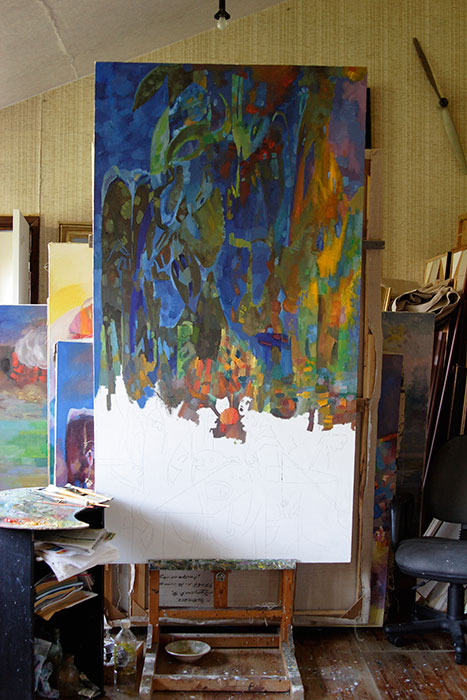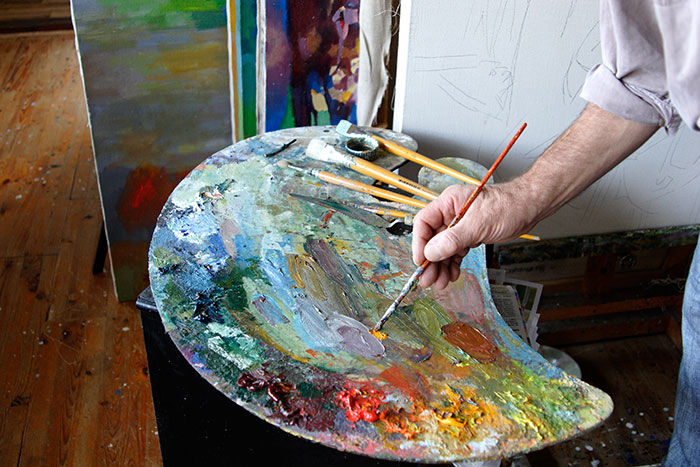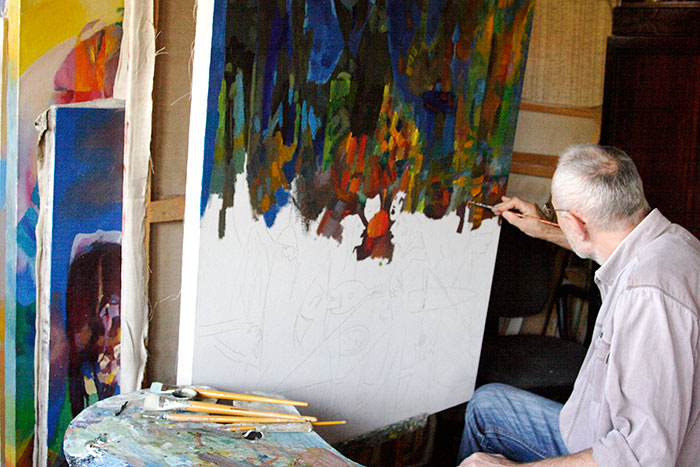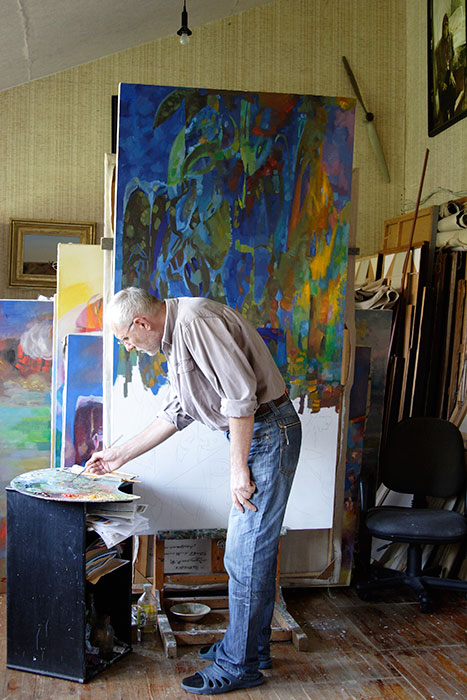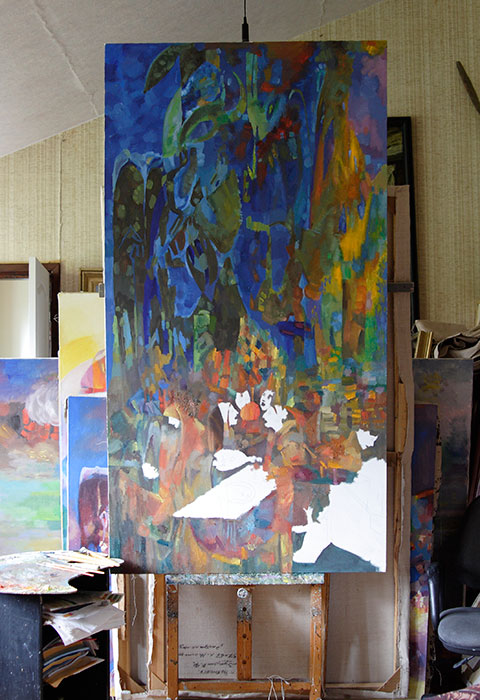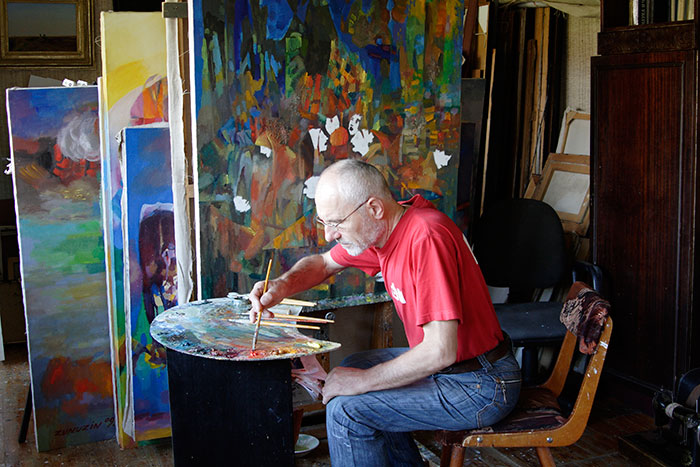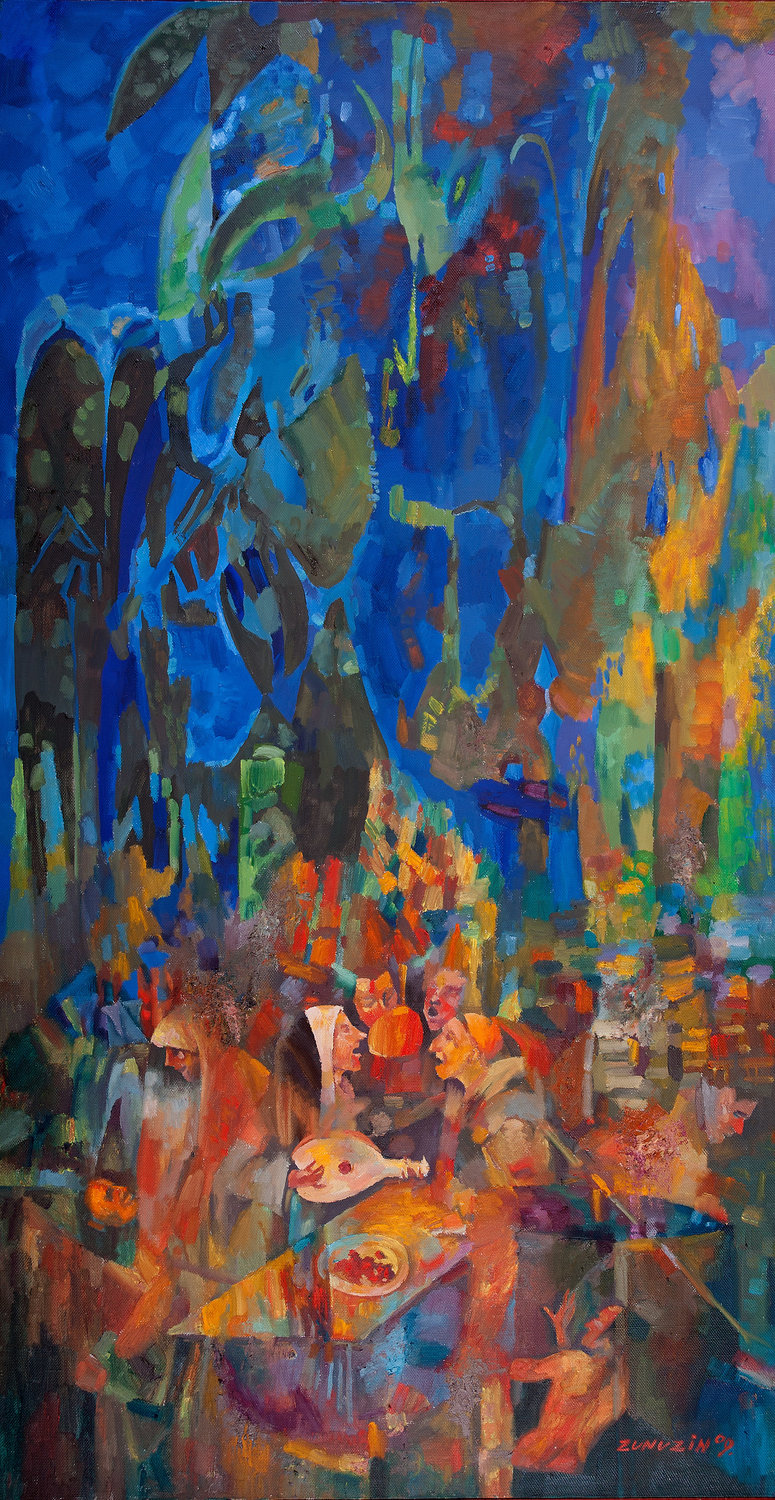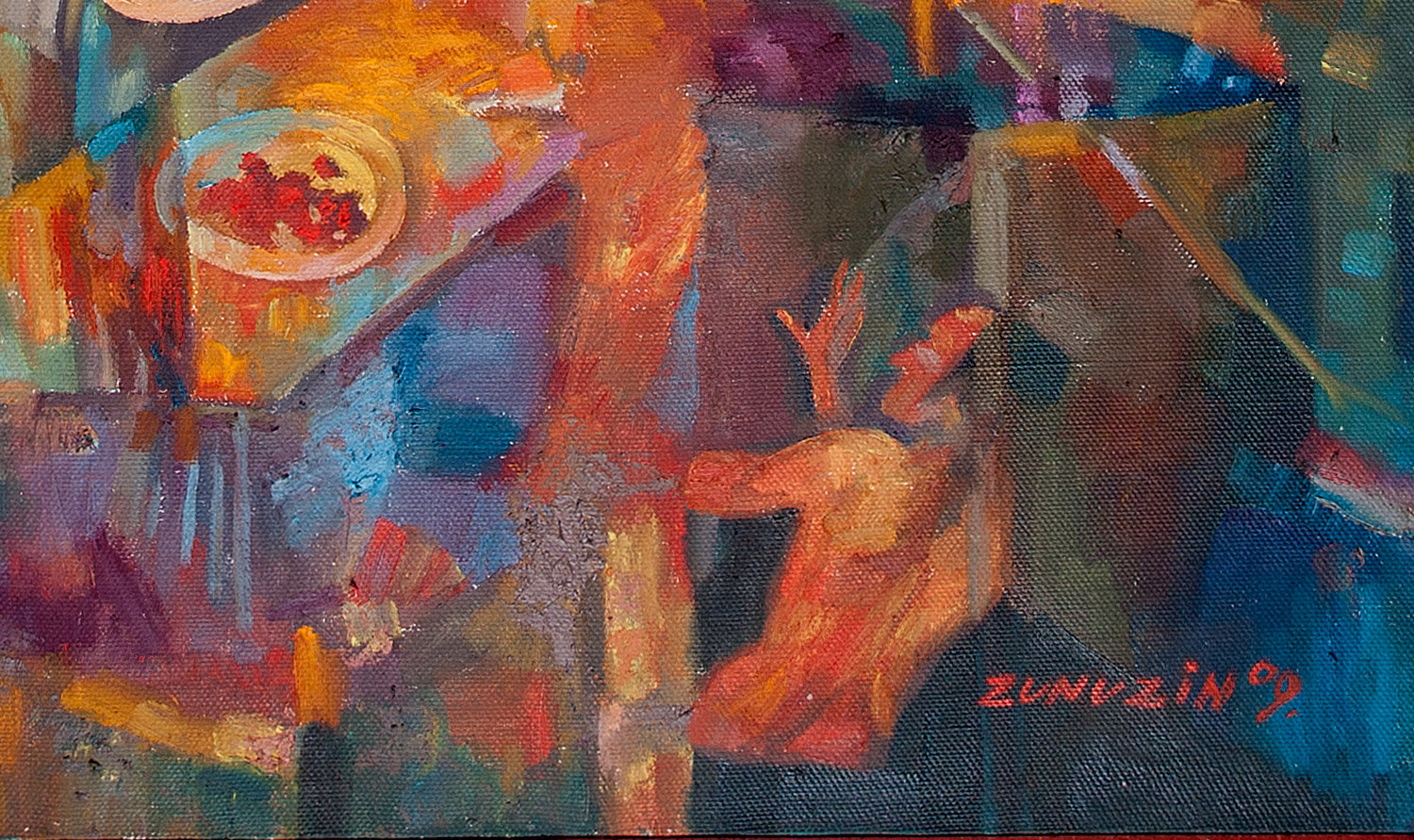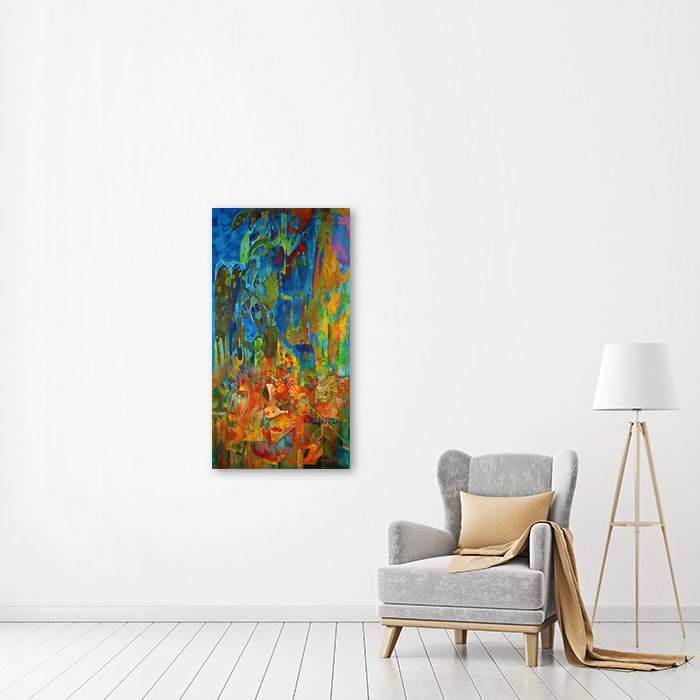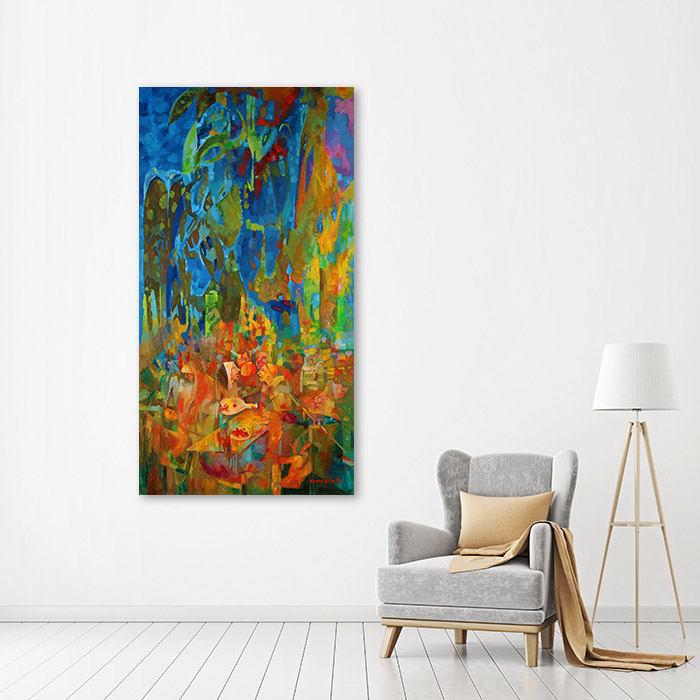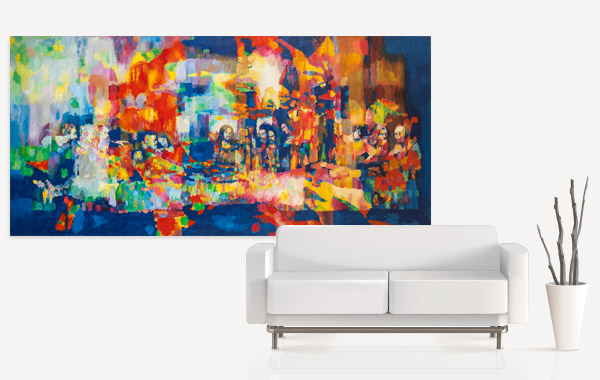The Ship of Fools (Hieronymus Bosch Improvisation)
Print information
- Artwork printed by EPSON Stylus Pro 7880 (Epson Ultra Chrome K3 Vivid Magenta) on canvas.
- Limited edition prints of 100. Each artwork will be individually printed, signed, dated and numbered by the artist Vladimir Zunuzin.
Payment and delivery
- Payments by Paypal or 2Checkout.
- Free worldwide shipping with tracking. Will usually ship within 3-5 business days.
- Year created: 2009
- Medium: oil on canvas
- Dimensions (cm): 190x100
This improvisation on The Ship of Fools transforms Bosch’s satirical vision into a kaleidoscope of color and abstraction. The canvas is dominated by deep, resonant blues that evoke the vastness of the sea, against which bursts of orange, red, and yellow ignite with chaotic energy. Figures at the bottom emerge from the painterly haze, caught in fragments of revelry and disorder.
At the center, musicians and diners appear clustered around a lute and scattered food, their faces animated in half-recognizable gestures of song and excess. Their forms dissolve into painterly strokes, suggesting fleeting moments of indulgence on the brink of dissolution. The surrounding palette amplifies their folly, framing them as fleeting sparks in a vast, consuming ocean.
The improvisation heightens Bosch’s allegory, rendering human folly through rhythm and fractured light. What was once grotesque satire becomes a symphony of color—an image where laughter, temptation, and futility mingle, destined to vanish within the overwhelming expanse of the unknown.
Painting process in details
